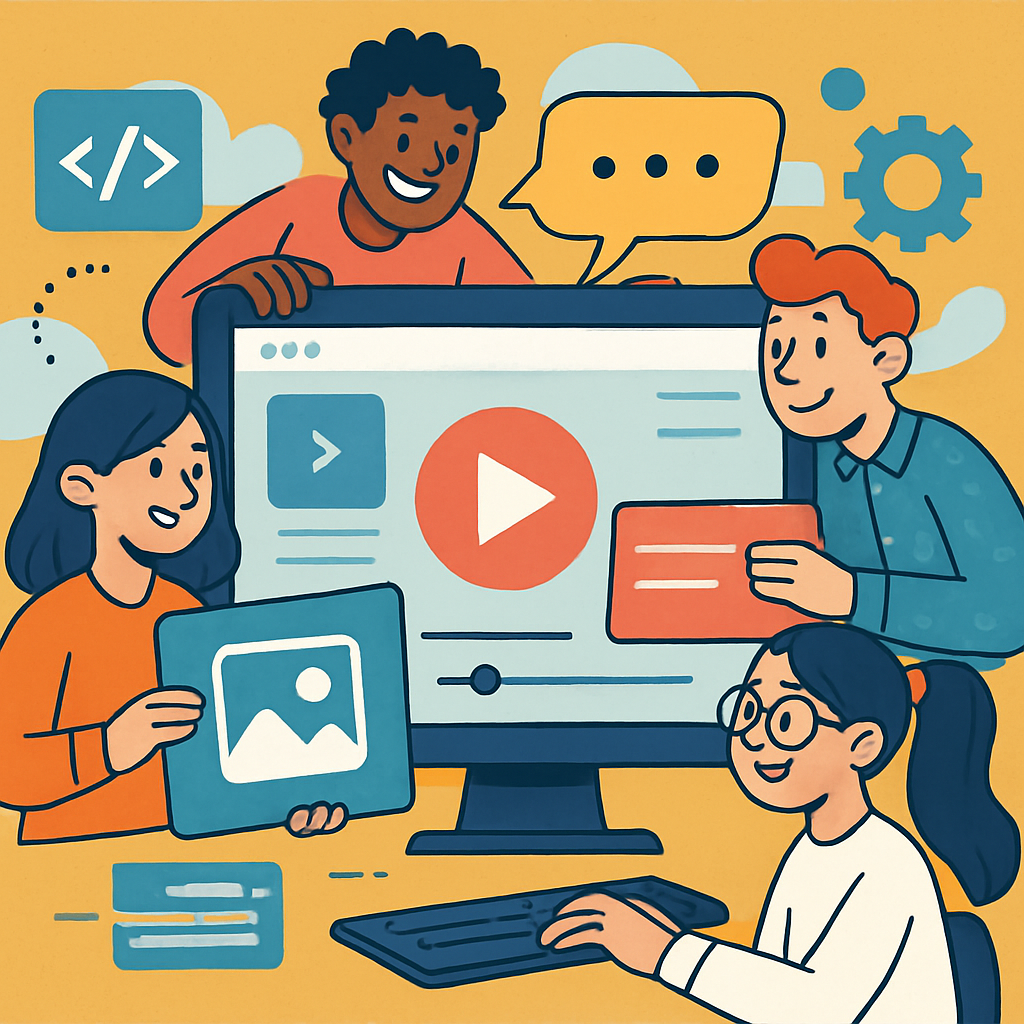 Introduction to the Collaborative Project
Introduction to the Collaborative ProjectWelcome to this lesson on collaborative project work. In this activity, you will form teams with your classmates to develop a multimedia project. This provides an opportunity to exercise creativity and engage in teamwork, producing items such as a short video or podcast. The primary objectives are to brainstorm ideas, plan the project, and execute it within groups of 3-4 students, distributing tasks and contributing ideas equitably. You will have considerable flexibility in selecting your project's theme, with an emphasis on collaboration and applying the digital skills you have acquired.
Participating in group work enhances essential skills such as communication and collaboration, which are vital in professional environments. Additionally, producing digital media allows you to convey concepts innovatively, similar to how experts utilise platforms like social media and websites. This experience will also help you understand the value of shared responsibility and collective problem-solving in achieving a common goal.
Upon completion of this lesson, you will be able to:
Examples of project ideas include: a short video on a school-related topic, a basic website for an imaginary club, a podcast segment featuring interviews with peers, a song with lyrics addressing online safety, or a social media campaign encouraging recycling. You are encouraged to combine these suggestions or devise original concepts.
To complete your project, you will require access to digital tools, such as free online editors. For instance, use Canva for graphic designs, Audacity for audio editing, or Clipchamp for video production. Explore these resources at Canva or Clipchamp.
For group collaboration, consider tools like Google Docs for shared documents or Trello for task management.
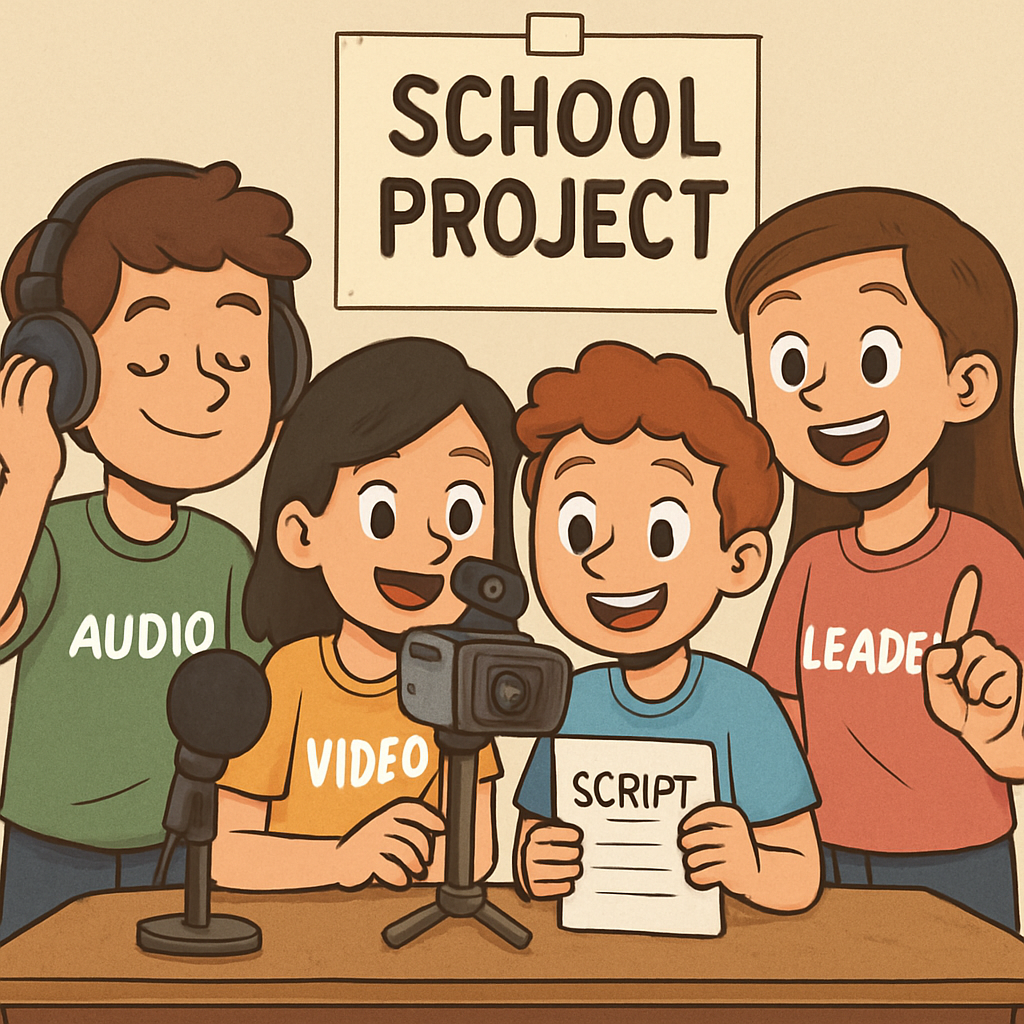 Forming Your Project Groups
Forming Your Project GroupsIt is now time to organise into teams for the collaborative project. Working in groups of three to four students will enhance the experience by allowing you to distribute tasks and combine diverse skills. If you are participating online, utilise a chat or video conferencing tool to connect with your classmates. If you are in a classroom setting, gather together with your peers.
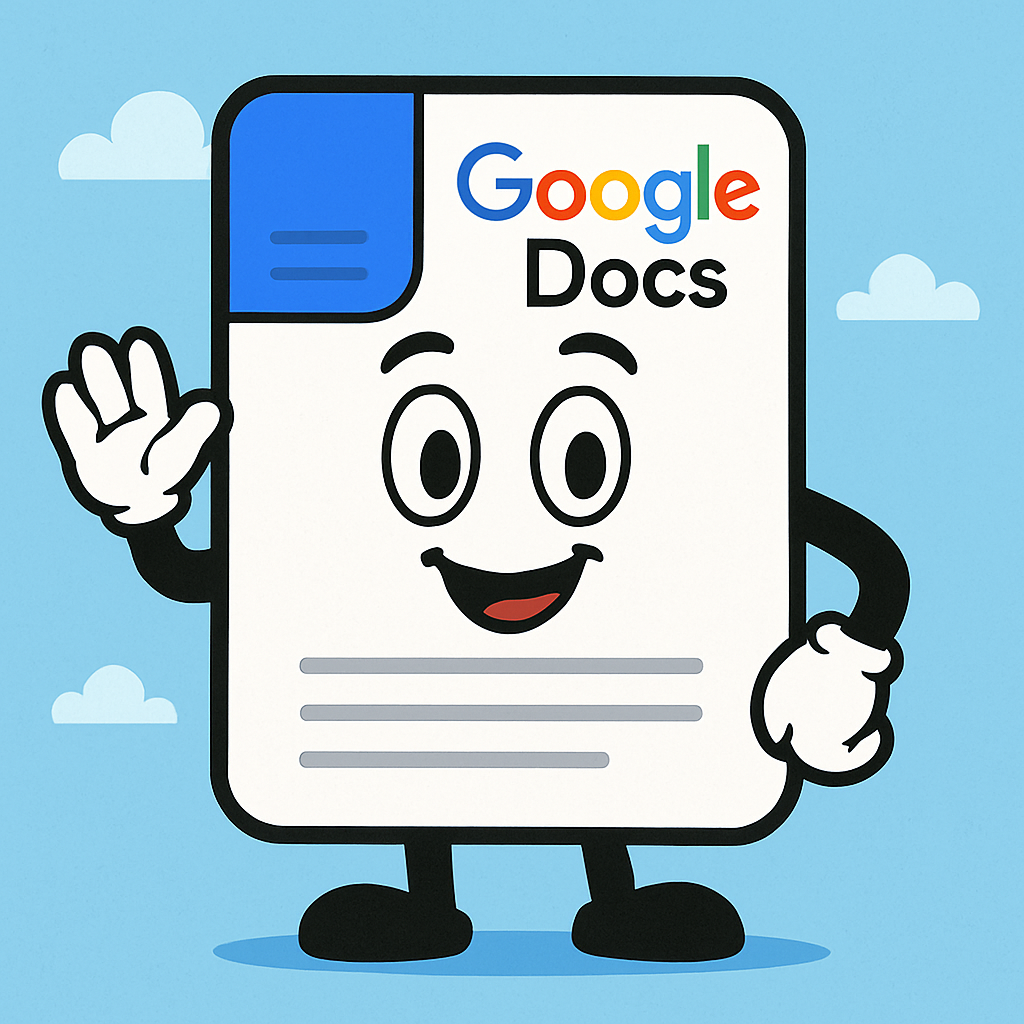 Using Google Docs for Your Group Project
Using Google Docs for Your Group ProjectIn this step, you'll learn how to use Google Docs to collaborate on your multimedia project. Google Docs is a free online tool that allows multiple people to work on the same document at the same time, making it perfect for group planning, scripting, and sharing ideas. This mini tutorial will guide you through the basics so you can use it effectively with your team.
Google Docs promotes teamwork by enabling real-time editing, commenting, and version history, which means you can see changes as they happen and revert if needed. It's great for organising thoughts, assigning tasks, and keeping everything in one place, helping your group stay coordinated and productive.
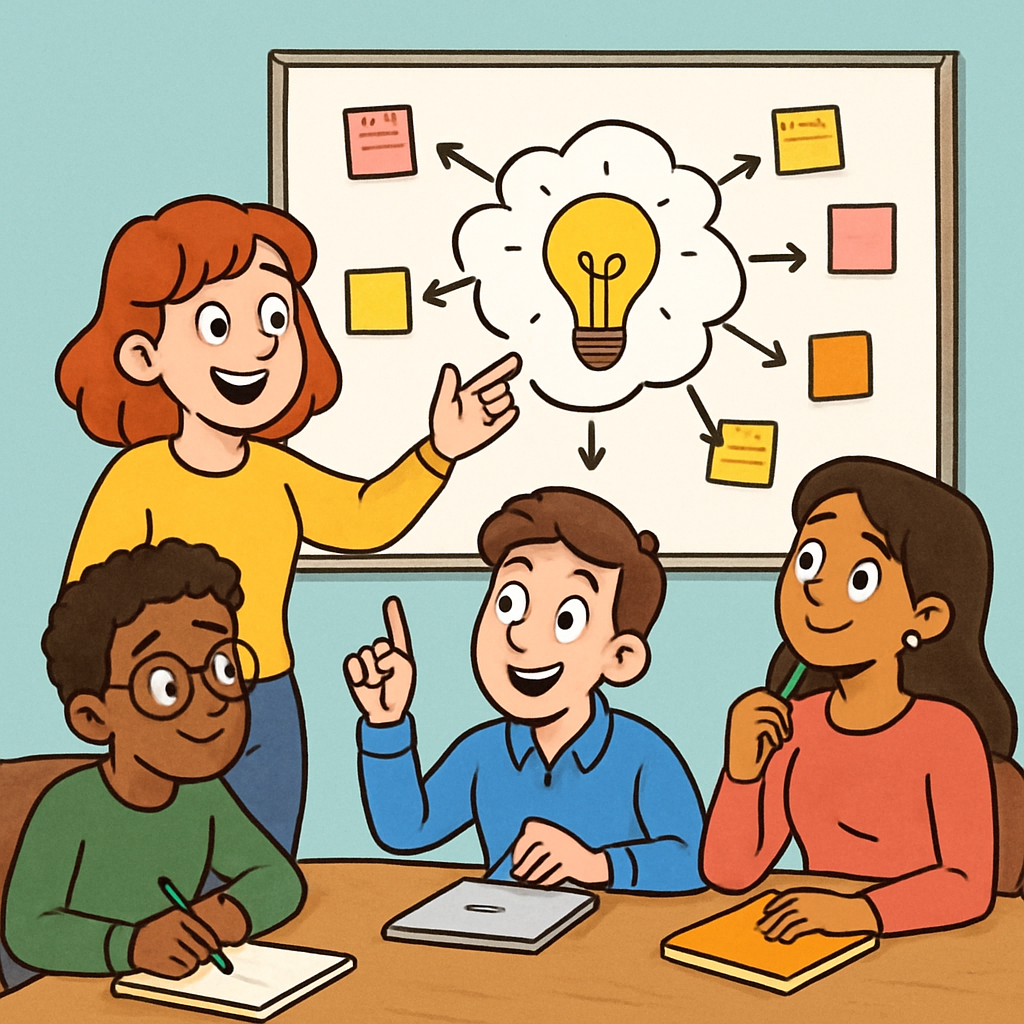 Brainstorming Project Ideas
Brainstorming Project IdeasNow that your group is formed, it is time to generate ideas for your collaborative multimedia project. Brainstorming involves sharing creative thoughts freely without immediate judgement, allowing innovative concepts to emerge. Consider topics that interest your group, such as school subjects, personal hobbies, or current events, to ensure the project is engaging for everyone involved.
Brainstorming encourages teamwork and helps your group explore a variety of possibilities. It ensures that all members contribute, leading to a stronger final idea that reflects the collective input of the team.
Keep in mind that your project could take various forms, including a short YouTube-style video, a simple website, a podcast episode, an original song, a social media campaign, or another digital creation. Feel free to blend these formats or invent something entirely new.
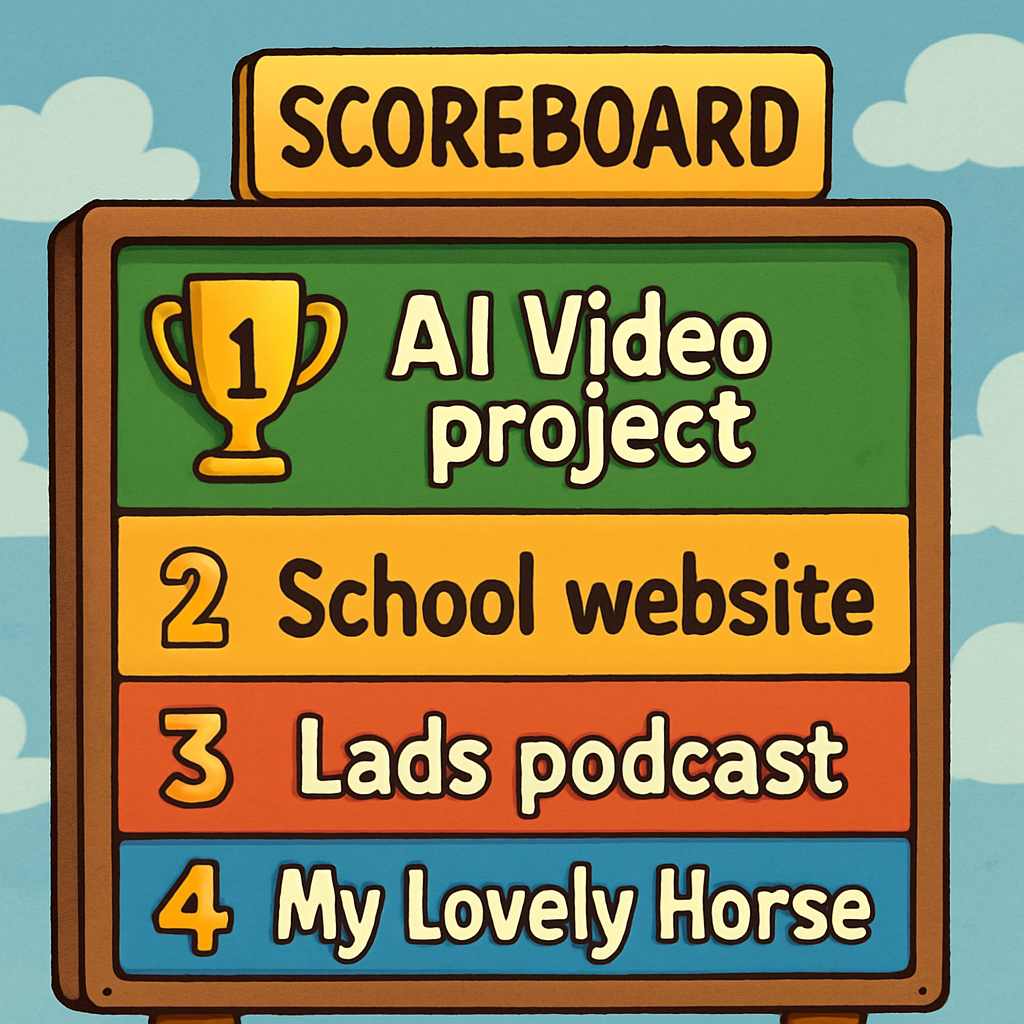 Narrowing Down Your Project Ideas
Narrowing Down Your Project IdeasFollowing your brainstorming session, the next stage is to select a single project idea from the options generated. This process ensures that the chosen concept is one that resonates with the entire group and is feasible to complete within the allocated time. By employing a structured ranking method, you can make this decision collaboratively and fairly, allowing every member's opinion to be considered.
Choosing the right idea is crucial as it sets the foundation for your project's success. It helps to focus your group's efforts, aligns with your collective interests and skills, and ensures that the project remains manageable. This step promotes democratic decision-making within the team, fostering a sense of ownership and commitment among all members.
Engage in this activity to rank and select your project idea systematically.
This method guarantees that the decision is inclusive and based on collective input, enhancing team cohesion.